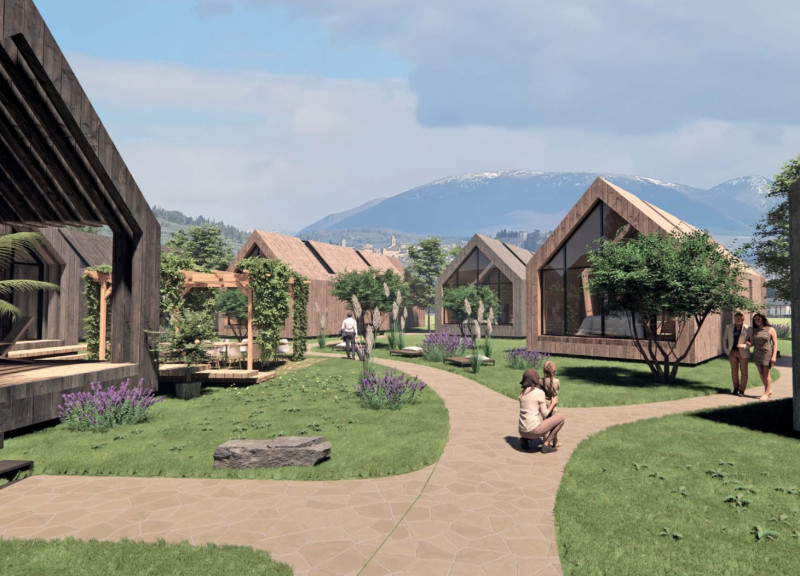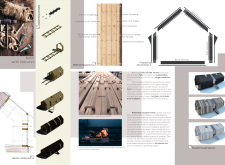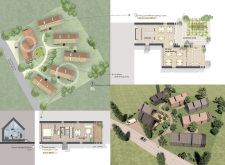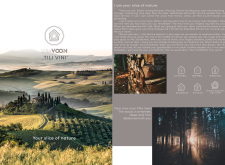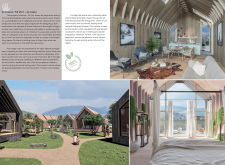5 key facts about this project
One of the primary representations of this project is its focus on sustainability through the use of locally sourced wood. The overall structure consists solely of wooden materials, allowing for a lower carbon footprint and efficient use of resources. The arrangement of the five residential units fosters interaction among residents, with shared spaces that encourage social engagement.
Sustainable Design Approaches
A key distinguishing feature of Villa VOON is its innovative construction methodology. The project utilizes a patented wooden frame system that relies on interlocking wooden planks, a technique that eliminates the use of adhesives or metal fasteners. This method not only simplifies the construction process but also enhances the longevity and resilience of the building.
The exterior cladding incorporates a burned wood treatment, which serves to protect the surfaces from weather-related wear while providing an aesthetically pleasing finish. The choice of this material highlights the architectural commitment to blending traditional craftsmanship with modern techniques.
Spatial Configuration and Community Integration
The layout of Villa VOON is designed to maximize communal living while respecting individual privacy. Each of the five units is strategically positioned to allow unobstructed views of the natural environment. The integration of outdoor gathering spaces, including a communal dining and wine tasting area, supports social interaction and fosters a sense of community among residents.
Large windows feature prominently in the design, facilitating natural light flow and reinforcing the connection between interior spaces and the exterior landscape. The careful organization of pathways and landscaped areas directs movement throughout the site and enhances the overall ecological footprint.
For more insights into the architectural plans, sections, designs, and ideas that underpin Villa VOON, TILI VINI, consider exploring the project presentation. The details within provide a comprehensive understanding of the innovative approaches taken in this architectural endeavor.


